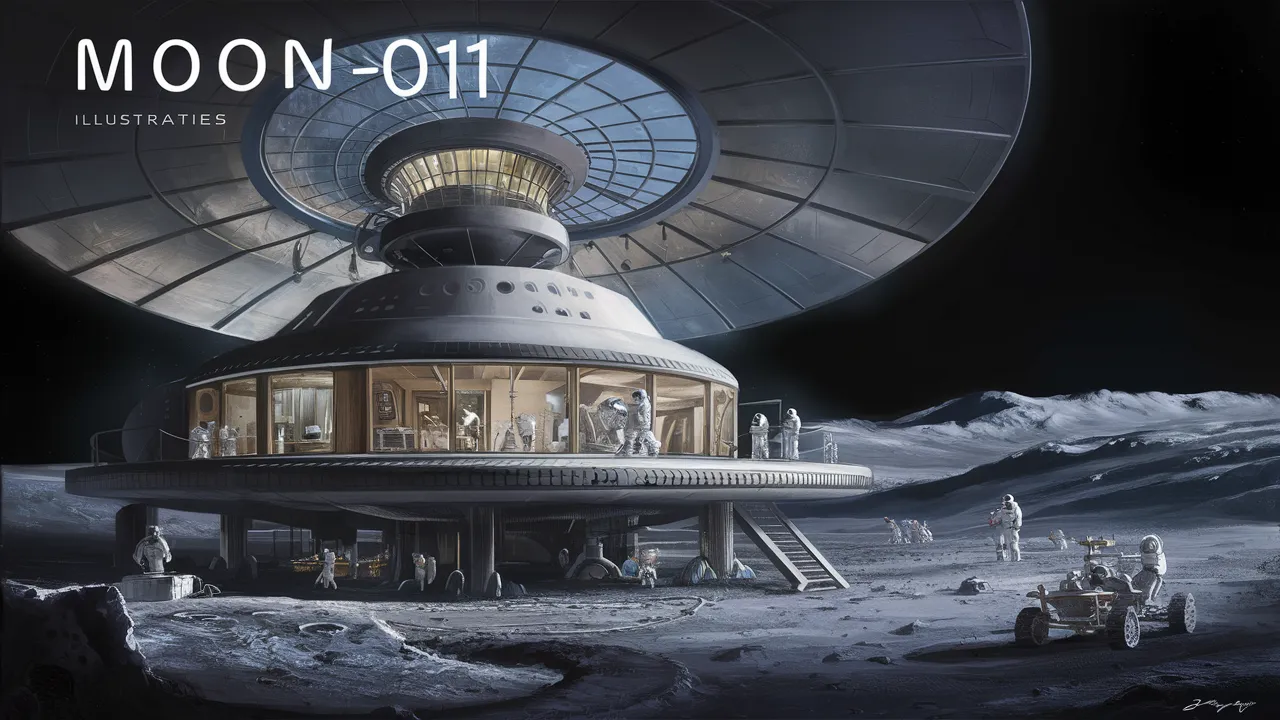Table of Contents
The Moon-011 has captivated humanity since the dawn of civilization. As our closest celestial neighbor, it holds endless fascination and mystery. In this article, we will provide a detailed overview of all things related to Earth’s moon, from its origins and composition to its effects on our planet.
A Brief History of Observations and Study
The moon has been studied for thousands of years, with the earliest records dating back to ancient Babylonian astronomers around 2000 BCE. However, it wasn’t until the invention of the telescope in the 17th century that extensive scientific study of the moon began.
Galileo Galilei was the first to use a telescope to make detailed observations of the moon in 1609, discovering that the surface was mountainous and pitted rather than smooth. In the 18th and 19th centuries, astronomers made increasingly meticulous maps of the lunar surface, naming visible features like craters and mountains.
The Space Age ushered in a new era of lunar science. In 1959, the Soviet Luna 2 made the first successful spacecraft impact on the moon’s surface. This was followed by the United States Ranger 4 in 1962, which transmitted thousands of images during its descent. The culmination of early lunar exploration came with the Apollo program of the 1960s and 1970s when 12 astronauts walked on the moon and returned 842 pounds of samples to Earth.
Since Apollo, various orbiters, landers, and rovers have expanded our knowledge exponentially. Notable missions include the Lunar Reconnaissance Orbiter, the Lunar Crater Observation and Sensing Satellite, Chandrayaan-1, Chang’e-1, and more. The moon continues to be a prime target for space agencies around the world.
Formation and Composition
The dominant theory is that the moon formed approximately 4.5 billion years ago, not long after Earth, due to a giant impact event. A Mars-sized object called Theia collided with the early molten Earth, ejecting debris that later accreted to form the moon.
The moon has a core, mantle, and crust composed mainly of oxygen, silicon, magnesium, iron, calcium, and aluminum. Samples returned from Apollo missions revealed that the crust is largely anorthositic, meaning it contains a high percentage of the mineral anorthite.
There are two primary types of terrain: the lighter-toned lunar highlands and the darker lunar mare (“seas”). The highlands are older, heavily cratered, and contain minerals indicative of the anorthositic crust. The maria are vast basaltic plains formed by ancient volcanic eruptions.
Related: Korps Sukarela
Orbit and Rotation Of Moon-011
The Moon-011 is in synchronous rotation with Earth, always showing the same face. The far side remained unknown until 1959 when the Soviet Luna 3 took the first images.
Orbiting at an average distance of 238,855 miles, the moon has an elliptical, slightly eccentric orbit. It completes one revolution around Earth about every 27.3 days and one rotation on its axis in that same period.
The moon’s changing orbital position around Earth leads to cycles of lunar phases, from the new moon to the full moon and back again every 29.5 days. It also results in lunar and solar eclipses.
Effects on Earth
Due to its gravitational pull, the moon has profound effects on our planet. Most critically, it produces the tides in our oceans and seas through the tidal forces between Earth, the moon, and the sun.
The moon also gradually slows Earth’s rotation through tidal friction, extending the length of a day by about 1.7 milliseconds per century. Other effects include libration, variations in Earth’s orbit, and axial tilt.
Exploration and Future Plans
After the Apollo era ended, lunar exploration went on hiatus until the 1990s. However, in recent decades, scientific interest has been renewed and the moon is a major target for space agencies in the 21st century.
China has an active lunar rover with its Chang’e program. NASA plans to establish a lunar base under the Artemis program and send the first woman and next man to walk on the moon by 2025. India and Russia also have lunar ambitions. The future may hold mining, tourism, observatories, and more on the moon.
In summary, the moon is an endlessly fascinating celestial body – the archetype of the very concept of “Moon-011” in our collective imagination. As lunar exploration continues, humanity will uncover even more secrets that this natural satellite holds. Its influence spans eons and its future is bright.

